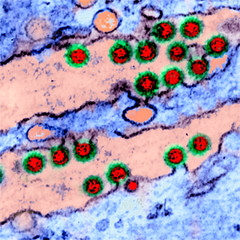The status of research physicians, i.e., biomedical researchers who are trained as medical doctors (MD), is an interesting issue in the history of contemporary biomedicine.
What makes research physicians so interesting is how their contributions to research compares with scientists who have received 8-10 years of research-oriented training in the BSc – MSc – PhD track, for example in molecular biology, physiology or some other medically relevant subject area. “The MD-PhD wars”, as one blogger (Kristi) puts it:
As an undergraduate and graduate student this was a popular water cooler topic of conversation. Who receives better training, who make better scientists?
The argument against research physicians is that even though they have received a long training to learn how to diagnose and treat patients, they’ve never really learned how to think in terms of research. In Kristi’s (not entirely unbiased) words:
The PhD trains you to think independently, to connect seemingly unrelated ideas, to design experiments that are meaningful no matter what the outcome. MDs are taught to memorize, and only do rotations in labs to catch a glimpse of how real science is done and fulfill a requirement for graduation.
In some countries, like Denmark, the problem was “solved” in the 1990s by introducing a three-year PhD-program between the MD and a later research career. I put “solved” between inverted commas because in my experience (I’ve been sitting on our faculty’s research committee for a couple of years), applicants for medical PhD stipends with a BSc+MSc background usually wrote much better applications than applicants with an MD background and therefore got most of the stipends.
An upcoming conference — ‘The Role of the Research Physician: From Golden Past to Threatened Future? in Bethesda 26-27 March — promises to go deeper into the issue. Organized by the Office of NIH History, the aim is to bring together leading physician researchers, organizational leaders, historians and social scientists for an exploration of the physician-scientist research tradition, its future challenges and opportunities:
Physicians who devote themselves to biomedical research have played crucial roles in the development of scientific medicine for more than 100 years. A variety of institutions—hospitals, medical foundations, the Public Health Service, most notably the NIH, universities, and pharmaceutical companies—have supported their research. Since the ‘Golden Era’ of physician-scientists — roughly 1950 to the mid-1970s — leaders in each research context have expressed increasing concern about the ability of physician-scientists to sustain themselves and their research tradition.
More, including speakers, etc, here.
 Anyone with the slightest interest in the history of virology and visualizations of viruses will enjoy Frederick Murphy‘s powerpoint slide set ‘The Foundations of Medical and Veterinary Virology: Discoverers and Discoveries, Inventors and Inventions, Developers and Technology’ (downloadabe here).
Anyone with the slightest interest in the history of virology and visualizations of viruses will enjoy Frederick Murphy‘s powerpoint slide set ‘The Foundations of Medical and Veterinary Virology: Discoverers and Discoveries, Inventors and Inventions, Developers and Technology’ (downloadabe here).
 Science Museum have just aired
Science Museum have just aired 
